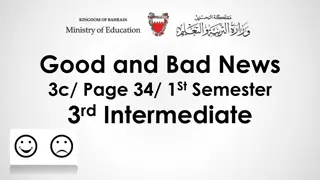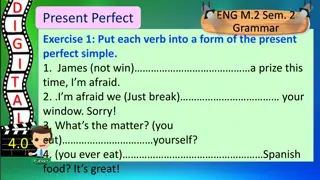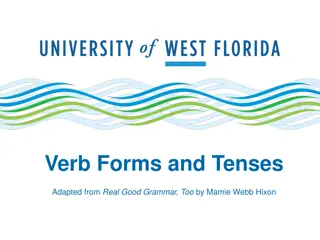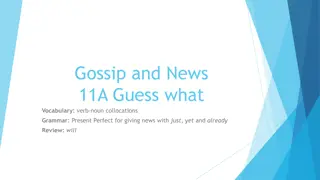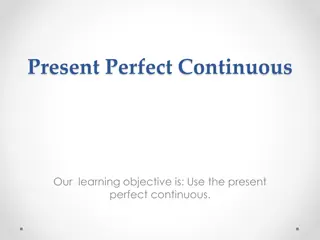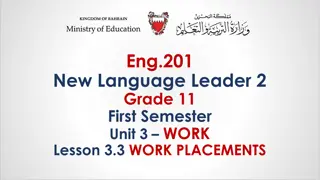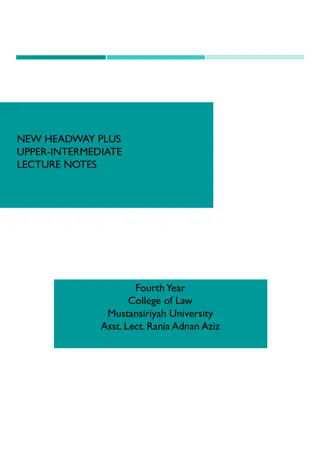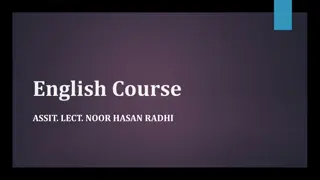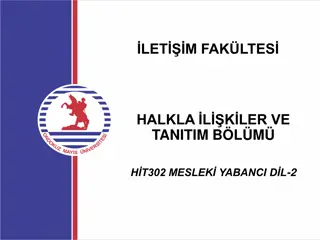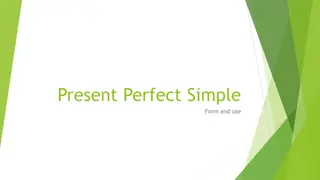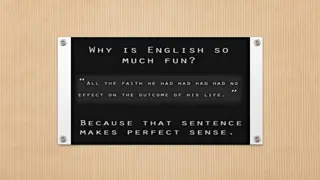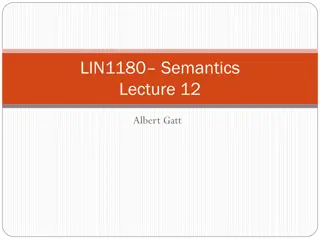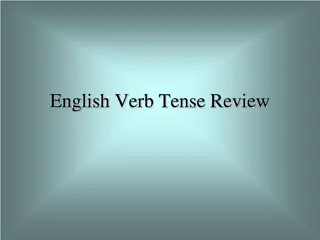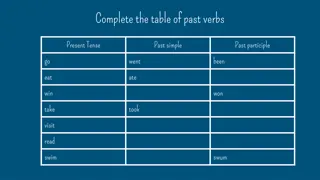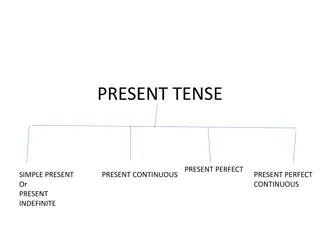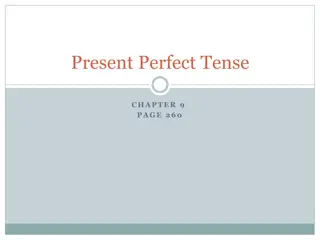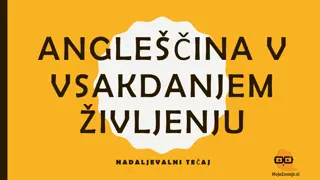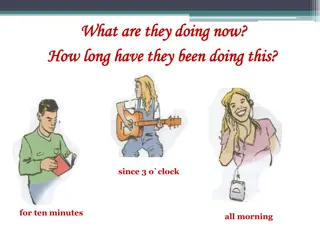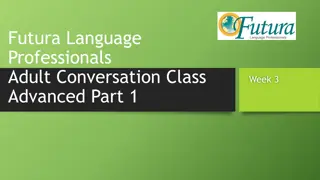Understanding Articles and Present Perfect Tense
Articles such as "a, an, the" help indicate specificity in nouns, while the present perfect tense is used to describe actions linking past and present. Learn how to correctly use articles and form questions in the present perfect tense.
Download Presentation

Please find below an Image/Link to download the presentation.
The content on the website is provided AS IS for your information and personal use only. It may not be sold, licensed, or shared on other websites without obtaining consent from the author. Download presentation by click this link. If you encounter any issues during the download, it is possible that the publisher has removed the file from their server.
E N D
Presentation Transcript
Articles ( A, An ,The ) The articles "a," "an," and "the" are used to indicate whether a noun is specific or non-specific. Here's a breakdown of when to use each article: 1. "A" is used before a singular countable noun that is non-specific. For example: I saw a cat in the garden. I saw a dog in the park. I need to buy a new laptop for school. He found a penny on the sidewalk. 2. "An" is used before a singular countable noun that is non-specific . That begins with a vowel sound. For example: She bought an apple from the store She is an actress. He is an engineer working on a new project. I need to buy an extra battery for my camera.
3. "The" is used before both singular and plural nouns to indicate that the noun is specific or is known to both the speaker and the listener. . For example:. The sun rises in the east. The cat that I saw in the garden was black. I ate the apple you gave me. I need to return the book to the library tomorrow
1. "How many" is used when asking about the number or count of countable nouns. How many books are on the shelf? .How many dogs do you have ? .How many people attended the concert last night? . How many apples are in the basket?
"How much" is used when asking about the quantity or amount of uncountable nouns or abstract concepts.. How much milk is left in the jug? How much money do you need? How much water is in the glass? How much sugar is needed for the recipe ? * How much is this shirt ? * How much are these jeans ? * How much does this shirt cost ? * How much do these jeans cost ?
present perfect tense present perfect tense : used to talk about actions or events that started in the past and have a connection to the present. S + has ,have +P.P+C . Ex We have been friends since high school . I have studied English for five years. They have been living in that house since 2010. We have studied French for two semesters. They have written a book together. They have driven to the beach. She has flown to many different countries.
When asking questions in the present perfect tense, we use the auxiliary verb "have" or "has" followed by the past participle of the main verb. Here are some examples of questions in the present perfect tense: - Have you ever traveled to Europe? - Has she finished her homework? - Have they seen that movie before?
The negative present perfect tense :used to express an action that started in the past and is still ongoing, but has not been completed up until the present moment. For example I have not seen that movie yet She has not finished her homework. She has not finished reading the book. My sister has not learned to drive a car. They have not eaten dinner yet.
There are certain adverbs that are commonly used with the present perfect tense 1-Ever: It is used to ask or talk about life experiences . For example: Have you ever been to Paris? Have you ever flown in a helicopter ? 2-Never: It is used to indicate that an action has not happened at any time in the past. For example: - I have never been skiing. - I Have never flown in a helicopter. 3- Just: It is used to indicate that an action happened very recently or a short time ago. For example: - I have just finished reading the book. - She has just left the office.
4- . Already: It is used to indicate that an action has happened before the present moment. For example: - I have already eaten dinner. - They have already seen the movie. 5- Yet: It is used to indicate that an action is expected to happen . For example: - Have you finished your homework yet? - They haven't arrived yet.
6- Since: is used to specify the starting point of an action or state that is still ongoing. Example: I have been studying English since 2010. I have known him since 2008. They have been friends since childhood. He has been studying French since he was in high school. 7-For: is used to indicate the duration of an action or state Example: She has been working on this project for two weeks. I have been studying English for five years. We have been waiting for the bus for 30 minutes. She has been playing the piano for five years


